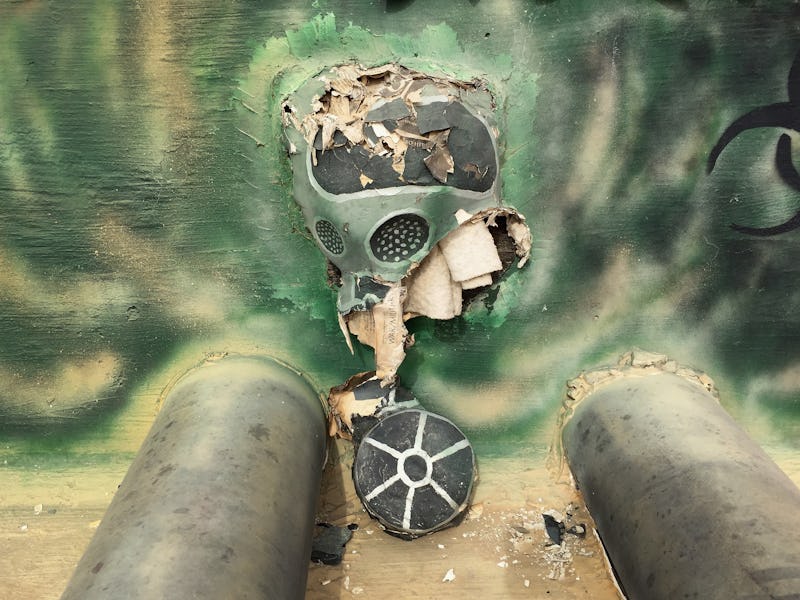Here’s What Happens When You Get Hit With Nerve Gas
Why sarin is banned around the world.

Death by nerve gas is an ugly way to go. When the residents of Khan Sheikhoun, a small village in western Syria, woke up on the morning of April 4, they had no idea what lay in store for them. Just before 7 a.m., planes dropped bombs on the town, and shortly thereafter, observers watched from the distance as a cloud of gas covered the town. It was clear that these were not conventional bombs.
Footage released by CNN on Tuesday showed the gruesome aftermath of the attack, in which 92 people died. In the video, children and adults can be seen gasping, foaming at the mouth, and convulsing. While the exact type of poison used in the April attack is not clear, evidence points to nerve gas. Shortly after the attack, the Syrian America Medical Society (SAMS) released a statement that said the evidence from people on the scene pointed strongly to a nerve gas like sarin.
“Hospitals in the surrounding area received patients who suffered symptoms indicative of an organophosphorus compounds agent, a category of toxic gases which includes sarin,” reads the statement. “According to SAMS doctors on the ground, symptoms seen in patients included constricted (or ‘pinpoint’) pupils, foaming at the mouth, and the loss of consciousness, slow heart rate, slow breathing, vomiting, muscles spasms and other neurological symptoms consistent with nerve agents.” While SAMS speculated that the gas at play in Khan Sheikhoun was sarin, the effects described are also similar to those observed in victims of malathion, another organophosphorus compound. Malathion is used as an insecticide but can also be toxic in humans at very low concentrations.
The symptoms reported by SAMS and seen in the footage are consistent with the United States Centers for Disease and Prevention’s information about sarin. The CDC lists runny nose, watery eyes, pinpoint pupils, coughing, sweating, and rapid breathing, as well as a handful of other symptoms. All of these things are clearly on display in the disturbing footage released by CNN. At high doses, the CDC warns of respiratory failure and convulsions, which can also be observed in the dying children and adults seen in the video.
Sarin and malathion can enter the human body not only through the lungs or eyes, but also through the skin. Once inside, it stops people’s bodies from breaking down the neurotransmitter acetylcholine, a chemical that helps nerves send signals to other cells. This creates an overabundance of acetylcholine, which overstimulates muscles and makes them difficult to control. Since victims of high levels of nerve gas can’t control the muscles associated with breathing, they typically die of asphyxiation within minutes.
There remains significant uncertainty over the April 4th attack, with Syrian President Bashar al-Assad claiming not only that it wasn’t sarin, but that the attack didn’t happen at all. Russia and Syria have blamed U.S. media for spreading misinformation about the incident, though al-Assad has used sarin on his citizens in the past.
Whatever the truth is in terms of politics and military strategy, one thing is clear: Dying from sarin or any other nerve gas is an extremely painful and unpleasant way to die.